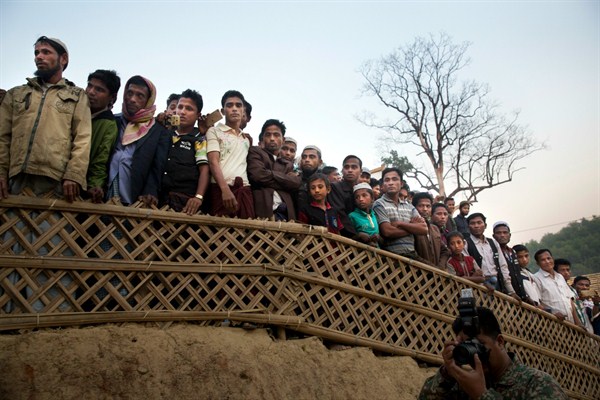When the world’s fastest-growing refugee crisis barreled into a sleepy coastal town in southern Bangladesh last August, the prime minister in Dhaka pledged that her impoverished country would go without food if that was what it took to help the Rohingya fleeing violence from the army in Myanmar. Almost nine months later, that welcome is starting to wear thin as the exodus far exceeds past influxes of Rohingya refugees and settles into a prolonged, seemingly intractable situation, taxing one of the world’s poorest and most densely populated countries.
Bangladesh, no stranger to the Myanmar military’s paroxysms of ethno-nationalist violence, has historically provided shelter to the persecuted Muslim Rohingya minority from next door. Desperate masses arrived in 1978, followed by more in 1991 when a quarter of a million Rohingya fled violence in overwhelmingly Buddhist Myanmar. Sectarian clashes in 2012 prompted another wave. But unlike in those instances, Bangladesh is now harboring more than two-thirds of the stateless community of Rohingya, and Myanmar appears to have little appetite to allow them back.
Previously, it was understood that the Rohingya “belonged to Myanmar and to Rakhine State,” and that eventually they would be returning there, Farooq Sobhan, a retired foreign secretary in Bangladesh, recently told an international conference in Dhaka. “Myanmar did not insist,” he added, “on referring to them as illegal immigrants from Bangladesh,” as it does now.

